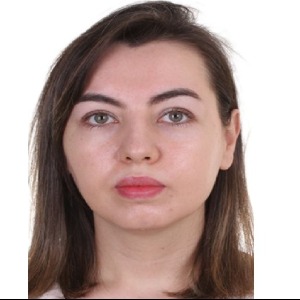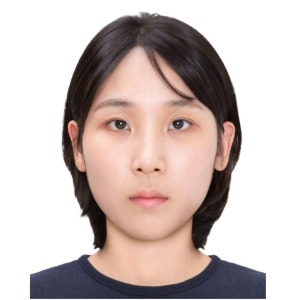Hashim Butt, Bolton Royal Hospital, United Kingdom
Behçet’s disease (BD) is a rare, chronic, multisystem inflammatory disorder that primarily affects blood vessels of all sizes. Clinically, it is characterised by recurrent oral and genital ulcers, skin lesions, and ocular involvement, particularly uveitis, which can [....] » Read More
























































































Title : Rare and interesting case of Goldenhar’s syndrome in a 3 years old male child
Gowhar Ahmad, Florence Hospital Srinagar, India
It was an Austrian ophthalmologist, Maurice Goldenhar, who in 1850 first described a syndrome complex characterized by congenital presence of limbal dermoid with congenital associated presence of preauricular skin tag or appendage. Sometimes, there is presence of squint, anophtha [....] » Read More
Title : Comparative outcomes of a newly modified trabeculectomy versus conventional trabeculectomy
Hyungju Park, Gangnam Tokyo Eye Clinic, Korea, Republic of
This prospective comparative study evaluated the outcomes of a newly modified trabeculectomy (NMT) versus conventional trabeculectomy (trab) in patients with open?angle glaucoma, with a special interest in its usefulness for normal-tension glaucoma. A total of 121 eyes were an [....] » Read More
Title : Intra orbital wooden foreign bodies: A retrospective study of 30 cases
Chandana Chakraborti, Regional Institute of Ophthalmology, Medical College & Hospital, India
We aimed to study thirty consecutive cases of intraorbital wooden foreign body (IOWFB), their clinical profile, and management in a tertiary care hospital. Materials and method: A retrospective observational study of 30 cases at our center from March 2020 to December [....] » Read More
Title : Factors associated with primary open angle glaucoma in a Nepali population Jiri Eye Study: Oculo genetic study
Archana Sharma, Tree Top Hospital, Maldives
Introduction: Glaucoma is the second most common cause of blindness with primary open-angle glaucoma (POAG) as one of the leading causes. Objective: To study the ocular and systemic associated factors that lead to the development of primary open-angle glaucoma Methodology: [....] » Read More
Title : Storytelling to cure blindness: A digital implementation lab to expand global ophthalmology training awareness and philanthropy
Blake Marleau Snyder, Stanford Hospital and Clinics, United States
Background: Preventable blindness remains one of the most solvable global health inequities, yet public awareness, trainee engagement, and philanthropic participation remain disproportionately low. At the same time, digital creators have demonstrated an unprecedented ability to [....] » Read More
Title : Evaluating the quality and readability of AI chatbot responses to frequently asked questions on basal cell carcinoma: Implications for patient education and digital health communication
Arrane Selvamogan, Leicestershire Partnership NHS Trust, United Kingdom
Background: Artificial intelligence (AI)-powered chatbots are increasingly used to deliver health information, providing real-time, accessible responses to patient queries. Concerns persist about the clarity, accuracy, and credibility of AI-generated medical content, especia [....] » Read More
Title : Evaluating the quality and readability of AI generated ophthalmic surgery education: A four model comparison
Arrane Selvamogan, Leicestershire Partnership NHS Trust, United Kingdom
Background: Artificial intelligence (AI) tools, particularly large language models (LLMs), are increasingly utilised to provide health information, with patients seeking simplified explanations of surgical procedures. In ophthalmology, the readability and reliability of AI-g [....] » Read More
Title : Evolving strategies in tissue procurement preservation and distribution to maximize corneal tissue utilization a fifteen year experience
Valentin Junger, University of Rome "Tor Vergata", Italy
Background: The paradigm of corneal transplantation has rapidly transitioned from penetrating keratoplasty (PK) to lamellar (e.g., DALK, ALK) and endothelia ltechniques (e.g., DMEK, DSAEK). Successful eye banking requires continuous adaptation in tissue preparation and preservati [....] » Read More
Title : Visual field progression in varying severities of treated patients with primary angle closure glaucoma
Shayne S Tan, Singapore National Eye Centre, Singapore
Background/Aims: To evaluate the rate and determinants of visual field (VF) progression across different severities of primary angle-closure glaucoma (PACG). Methods: PACG patients with ≥5 reliable VFs and ≥5 years of follow-up were included in this retrospective study. [....] » Read More
Title : A comprehensive approach to the treatment of proliferative diabetic retinopathy complicated by tractional retinal detachment: experience with perioperative thromboelastography
Rusanovskaia Anna, Moscow Clinical Research Center Hospital, Russian Federation
Objectives: The primary goals of vitreoretinal surgery for tractional retinal detachment in diabetic retinopathy include: Minimizing intra? and postoperative hemorrhages. Ensuring optical media transparency. Releasing traction from fibrovascular membranes on the retina. [....] » Read More
Title : CMV retinitis as a cause of retinal detachment in HIV infection immune status stages diagnosis and comprehensive surgical treatment
Rusanovskaia Anna, Moscow Clinical Research Center Hospital, Russian Federation
At present, the world continues to face the HIV infection pandemic, which is naturally accompanied by an increasing number of patients with various complications of this disease. Among the causes of blindness in HIV?infected patients, retinal detachment ranks third — after [....] » Read More
Title : Relationship between tear meniscus parameters and nasal anatomy: Does nasal septum deviation affect tear parameters?
Bilgehan Erduran, Malatya State Hospital, Turkey
Purpose: To investigate whether nasal anatomical alterations associated with nasal septum deviation (NSD) contribute to early functional impairment in the lacrimal drainage system, potentially indicating subclinical stages of primary acquired nasolacrimal duct obstruction (PANDO) [....] » Read More
Title : Change in axial length of the eye after phacoemulsification with intraocular lens implantation
Aigul Farkhutdinova, Moscow City Clinical Hospital, Russian Federation
Summary: It has been proven that changes in the parameters of the anterior segment of the eye after phacoemulsification with intraocular lens (IOL) implantation are most pronounced in patients with myopia. However, changes in the axial length of the eye after phacoemulsification [....] » Read More
Title : SUMOylation is a translatable target in hypoxic MNPs regulating retinal vasculopathy
Xufang Sun, Huazhong University of Science and Technology, China
Retinal vasculopathies pose devastating threat to human health. While anti-VEGF therapy situates the first-line treatment for patients, the clinical efficacy is limited by suboptimal response and potential risks raised by the long-term high-dosage use. Neurovascular unit (NVU) un [....] » Read More
Title : Experimental study on the effect of PINK1 mediated mitophagy on diabetic retinal neuroglial network lesions
Xiangxia Luo, Gansu University of Chinese Medicine, China
Objective: To explore the role of mitophagy in diabetic retinal neuroglial network lesions and analyze its mechanisms. Methods Experimental study. SD rat retinal müller cells (rMCs) were cultured in vitro, and the cells were divided into control (Control), hyperosmosis (HP), [....] » Read More
Title : Clinical research on the efficacy of yishi mingmu pills combined with yishi tongluo exercises in the prevention and control of myopia in children and adolescents
Xiangxia Luo, Gansu University of Chinese Medicine, China
Objective: To evaluate the efficacy of Yishi Mingmu Pills (a traditional Chinese medicine formulation) combined with Yishi Tongluo Exercise (a modified eye exercise) in children with early myopia and mild myopia due to deficiency of heart yang. Methods: A randomised controlled [....] » Read More
Title : Minimally Invasive Glaucoma Surgery (MIGS) with iStent inject W in Primary Open-Angle Glaucoma (POAG): Clinical outcomes and best practices
Peng Lu, The Second Hospital of Lanzhou University, China
Object: Primary open-angle glaucoma (POAG) remains a leading cause of irreversible blindness, with minimally invasive glaucoma surgery (MIGS) emerging as a pivotal strategy for early-stage management. This study aims to evaluate the clinical outcomes and safety of iStent Inject W [....] » Read More
Title : Intravitreal dexamethasone implant versus ranibizumab versus ranibizumab combined with dexamethasone implant for macular edema secondary to retinal vein occlusion
Xiubin Ma, Qingdao Eye Hospital of Shandong First Medical University, China
Purpose: To compare the efficacy of intravitreal injection (IV) ranibizumab, ranibizumab plus dexamethasone implants (R + DEX), and DEX for macular edema secondary to retinal vein occlusion (RVO-ME). Methods: This was a double-blinded, randomized, comparative study. Two hundre [....] » Read More
Title : Pattern of uveitis in a secondary eye care center at Panipat Haryana
Kritika Garg, HV Desai Eyecare Center Pune, India
Background: Uveitis pattern varies according to regional, demographic, and racial factors. Therefore, an epidemiological study of the distribution of uveitis in various regions in India is likely to provide valuable information. There is no study available on the pattern of uveit [....] » Read More
Title : Amyloid associated protein misfolding and structural alterations in human cataractous lenses
Sujata, Indian Institute of Technology Kanpur, India
Cataract, opacification of the lens, is a multifactorial eye disease affecting millions of people globally. However, its underlying etiology remains unclear despite progress in surgical methods. Although researchers have implicated oxidative stress and post- translational modific [....] » Read More
Title : Managing milky capsular bag distension with inferior laser capsulotomy not the usual cut
Pooja Bansal, Centre for Sight Eye Institute, India
A 60-year-old man presented with recent onset decrease in vision in the right eye (OD). Both eyes (OU) had undergone uncomplicated cataract surgery ten years back. Best corrected visual acuity OD was 20/60 and 20/400 in the left eye (OS). Slit lamp examination revealed a normal [....] » Read More
Title : Multimodal imaging characteristics of fibrinous central serous chorioretinopathy masquerading posterior uveitis
Pooja Bansal, Centre for Sight Eye Institute, India
Retrospective study of records of 8 patients (12 eyes) of fibrinous CSCR, misdiagnosed as posterior uveitis elsewhere. Fundus images, fluorescein angiography (FA), autofluorescence and optical coherence tomography (OCT) at baseline and follow up visits were analyzed. Minimum du [....] » Read More
Title : Retinitis pigmentosa misdiagnosed as retrobulbar neuritis
Vidush Ratan, Deen Dayal Upadhyay Hospital, India
Case: Female of 17 years of age ,resident of delhi belonging to lower middle socioeconomic status;chief complaints: diminution of distant vision since childhood and headache since last one year;history of present illness: complaints of diminision of vision since childhood espec [....] » Read More
Title : Common and uncommon ocular and facial indications of Botox: Clinical insights supported by illustrative videos
Ashwani Meherda, VMMC & Safdarjung Hospital, India
Botulinum toxin type A (Botox) is an established neuromodulator widely utilized in ophthalmology and facial aesthetic practice. By inhibiting presynaptic acetylcholine release at the neuromuscular junction, it produces reversible chemo denervation and targeted muscle relaxation. [....] » Read More
Title : Sac swelling doesn’t regurge: No time to relax
Rishav Raj, Dr Rajendra Prasad Centre for Ophthalmic Sciences, India
Objective: Lacrimal sac tumors are extremely rare. Most common benign tumor being squamous papilloma. Herein we present two unusual cases of benign lacrimal sac tumors with aim to highlight their clinical features and di [....] » Read More
Title : Optimizing small pupil phaco: 12 year evolution in high risk cases
Raashid Maqbool Wani, Kashmir Eye Hospitals, India
Title: Optimizing Small Pupil Phacoemulsification: 12-Year Single-Surgeon Evolution in 1,142 High-Risk Cases Purpose: To evaluate the safety, efficacy and progressive complication reduction achieved through sequential adoption of pupil expansion techniques in high-risk sm [....] » Read More
Title : A comparative evaluation of phacoemulsification with goniotomy versus trabeculectomy in patients with young onset primary angle closure glaucoma (YO PACG)
Prannya Arora, All India Institute of Medical Sciences, India
Introduction: The etiology of angle closure in young individuals differs from the older population and is typically associated with structural/developmental ocular anomalies rather than relative pupillary block. YO-PACG being a rare entity, there is paucity of literature reg [....] » Read More
Title : Bilateral idiopathic inflammatory orbital syndrome with asymmetric myositis and dacryoadenitis
Sharayu Vijay Kathar, Mata Gujri Memorial Medical College, India
Purpose: To describe an unusual case of bilateral idiopathic inflammatory orbital syndrome presenting with asymmetric orbital myositis, unilateral proptosis and dacryoadenitis, highlighting its atypical clinical features, diagnosis, and treatment outcomes. Methods: A [....] » Read More
Title : Optical clues to a rare diagnosis spectral domain OCT documented foveal hypoplasia revealing oculocutaneous albinism in a child
Sharayu Vijay Kathar, Mata Gujri Memorial Medical College, India
Purpose: To report a rare case of masquerade syndrome in which a painful red eye with posterior segment involvement led to the diagnosis of an underlying laryngeal carcinoma. Background: Oculocutaneous albinism (OCA) is a hereditary disorder characterized by generalized hypo [....] » Read More
Title : Managing ocular haemorrhage in haemophilia: Key challenges and considerations
Divya Sri Vejayan, University Malaya, Malaysia
Background: Haemophilia is an inherited coagulation disorder characterised by deficiency or dysfunction of clotting factors, predisposing affected individuals to prolonged bleeding following trauma or surgery, as well as spontaneous haemorrhages. Ocular involvement is rare but po [....] » Read More
Title : Dry eye disease in the context of refractive surgery: Prevalence metrics and treatment outcomes among military personnel
Sevinj Orujova, Azerbaijan Medical University, Azerbaijan
The study included 185 military personnel indicated for refractive surgery. Group I (n=90) with preoperative mild dry eye disease (DED) confirmed and managed with standard ocular-surface therapy and Group II (n=95) without indication for preoperative DED treatment. Postoperativel [....] » Read More
Title : Barriers to essential eyecare service by visually impaired people and the impact of war in fragile conflict affected tigray region Ethiopia
Abeba Tesfay Gessesse, Mekelle University, Ethiopia
Background: Ethiopia faces a high burden of blindness and visual impairment, yet access to eyecare services remains limited, particularly in conflict-affected areas like Tigray. The two-year long war in Tigray has devastated healthcare infrastructure, further exacerbating [....] » Read More
Title : Visual functions and anterior ocular surface changes post-trans-epithelial photo refractive keratectomy
Elnzeer Hussain Essa Mohammed, My Sight Optical, Sudan
Purpose: To assess the impact of Trans-PRK on visual acuity, contrast sensitivity, spherical aberration, tear stability, corneal surface and thickness. Method: A quantitative, comparative, and prospective case study was conducted in the Kingdom of Saudia Arabia after receiving [....] » Read More
Title : Corneal blindness can be prevented right decision right action is the need of the hour
Kandagadla Jyoti, MTMC, India
Introduction: Corneal blindness accounts to 3.2 to 5.1 % of all cases of blindness worldwide. A wide variety of diseases and conditions can cause corneal blindness. In this presentation I would like to summarise the various causes, methods to prevent them and the role o [....] » Read More
Title : Tiny eyes big battles rare case of 4 months old
Trupti Sute, Government Medical College, India
Retinoblastoma is the most common ocular malignancy of childhood. Although retinoblastoma primarily affects younger children, it is very rare below 1 year of age. A 4-months-old girl child presented with leukocoria in her right eye since 2 months. Posterior segment examination re [....] » Read More
Title : Unravelling an ABHD12 mutation: a genetically confirmed case of PHARC syndrome
Priyanka Shinde, Shroff's Charity Eye Hospital, India
Purpose: The purpose of this case report is to highlight the clinical heterogeneity and diagnostic challenges of PHARC syndrome, a rare autosomal recessive neurodegenerative disorder caused by ABHD12 gene mutations. By presenting this report, we highlight the value of multis [....] » Read More
Title : Insights into a solution for post refractive surgery Ectasia
Rubina Shah, National Eye Center Lahore, Pakistan
Introduction: In the recent decade, technological advancements in ophthalmology have made procedures more precise for both patients and surgeons. However, it also has detrimental side effects if used without proper research. Post-lasik ectasia is a devastating side effect after a [....] » Read More
Title : Diabetic retinopathy screening in young adults
Panav Meherda, Army College of Medical Sciences, India
This Poster is to highlight the importance, methods, and outcomes of early DR screening in young adults with Type 1 and Type 2 diabetes. A measurable proportion of young diabetics show early retinal microvascular changes (microaneurysms, dot-blot hemorrhages, hard exudat [....] » Read More
Title : Efficacy of topical treatment for Acanthamoeba keratitis a systematic review
Ni Putu Dian Apriandary, Gema Santhi Hospital, Indonesia
Objective: Acanthamoeba Keratitis (AK) is a rare, sight-threatening corneal infection with increasing incidence, often linked to contact lens use. Management is challenging due to variable presentation and resistance. The aim of this study was to review the topical therapy influe [....] » Read More
Title : Reading performance under a virtual reality environment in children with intermittent exotropia
Seung Ah Chung, Ajou University School of Medicine, Korea, Republic of
Purpose: To investigate the reading performance in children with intermittent exotropia (IXT) under a virtual reality (VR) system presenting an image separately to each eye. Methods: Thirty-eight children aged 8-12 with IXT (17 untreated and 21 treated) were compared [....] » Read More